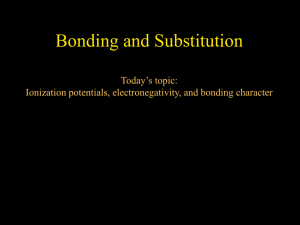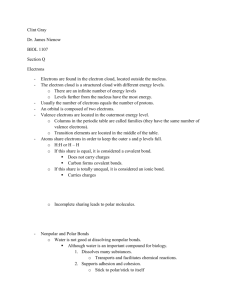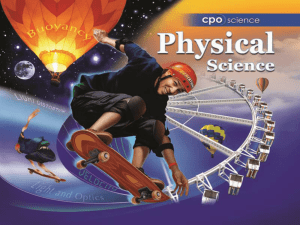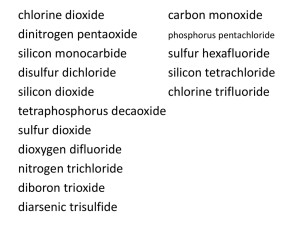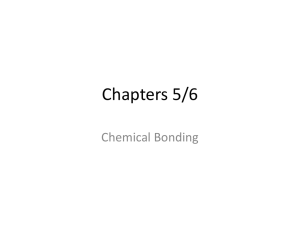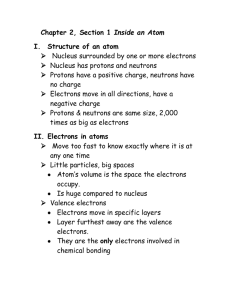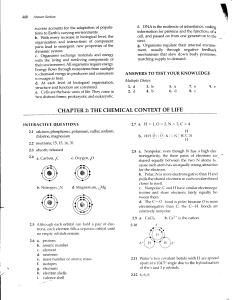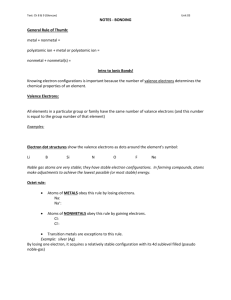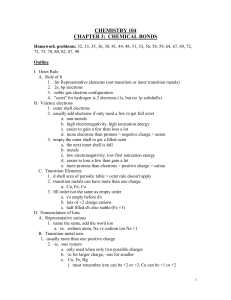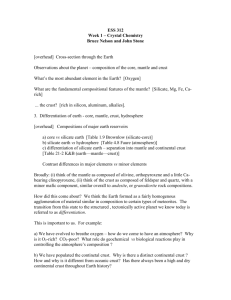Practice Test
advertisement
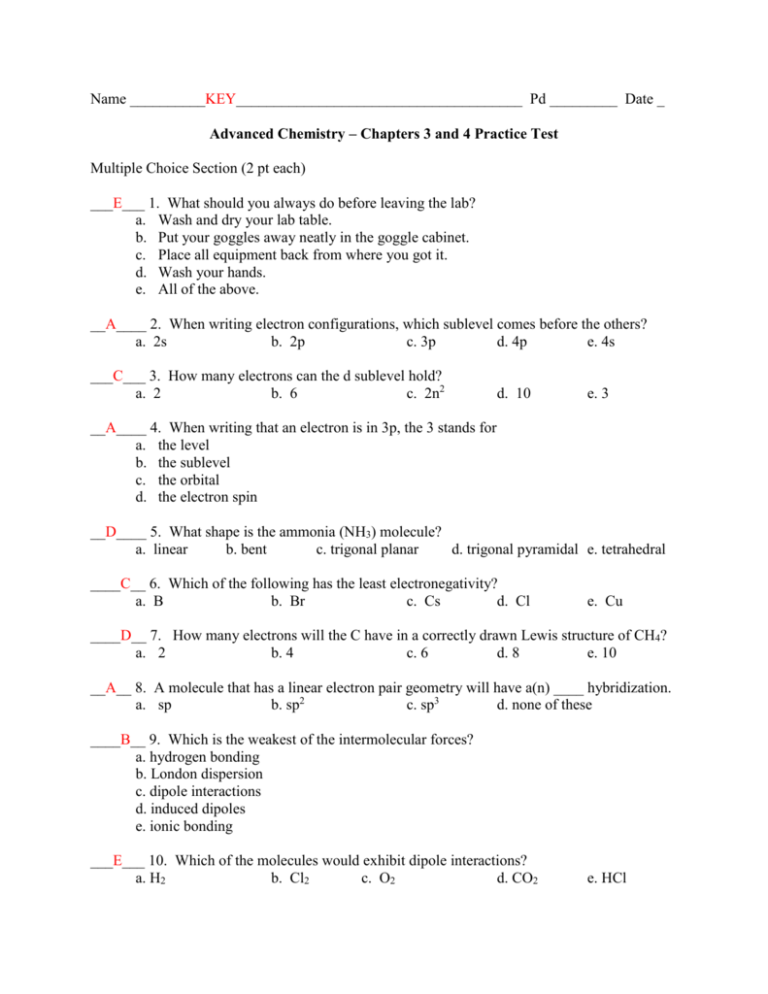
Name __________KEY______________________________________ Pd _________ Date _ Advanced Chemistry – Chapters 3 and 4 Practice Test Multiple Choice Section (2 pt each) ___E___ 1. What should you always do before leaving the lab? a. Wash and dry your lab table. b. Put your goggles away neatly in the goggle cabinet. c. Place all equipment back from where you got it. d. Wash your hands. e. All of the above. __A____ 2. When writing electron configurations, which sublevel comes before the others? a. 2s b. 2p c. 3p d. 4p e. 4s ___C___ 3. How many electrons can the d sublevel hold? a. 2 b. 6 c. 2n2 d. 10 e. 3 __A____ 4. When writing that an electron is in 3p, the 3 stands for a. the level b. the sublevel c. the orbital d. the electron spin __D____ 5. What shape is the ammonia (NH3) molecule? a. linear b. bent c. trigonal planar d. trigonal pyramidal e. tetrahedral ____C__ 6. Which of the following has the least electronegativity? a. B b. Br c. Cs d. Cl e. Cu ____D__ 7. How many electrons will the C have in a correctly drawn Lewis structure of CH4? a. 2 b. 4 c. 6 d. 8 e. 10 __A__ 8. A molecule that has a linear electron pair geometry will have a(n) ____ hybridization. a. sp b. sp2 c. sp3 d. none of these ____B__ 9. Which is the weakest of the intermolecular forces? a. hydrogen bonding b. London dispersion c. dipole interactions d. induced dipoles e. ionic bonding ___E___ 10. Which of the molecules would exhibit dipole interactions? a. H2 b. Cl2 c. O2 d. CO2 e. HCl 11. What are valence electrons? How do you determine the number of valence electrons in an atom? Why are valence electrons important? (3 pt) Outermost electrons # electrons = group # (i.e. IA, IIA, IIIA, IVA, etc) Valence electrons are important because they form chemical bonds. 12. How many valence electrons do the following elements have? ______________A. 6 sulfur ______________B. 1 potassium ______________C. 5 nitrogen 13. Write the electron configuration for neon. 1s22s22p6 14. Draw a picture of an s orbital. How many electrons does the s sublevel hold? (2 pt) S sublevel holds a maximum of 2 electrons. 15. What is the difference between ionic, nonpolar covalent, and polar covalent bonds? Ionic bonds are caused by the attraction of positive and negative ions. They result when the electronegativity difference is greater than 1.7. When the electronegativity difference is between 0.3 and 1.7, the bond is polar covalent. This means that the electrons are being shared, but not equally. The last type is nonpolar covalent, which results when the electronegativity difference is 0 to 0.3. This is when the electrons are shared equally. 16. What type of bonding would occur between: A. Sulfur (S) and Bromine (Br) _______nonpolar/polar covalent B. Sodium (Na) and Chlorine (Cl) _____ionic________________ 17. Explain the relationship between bond energy and number of bonds. As the number of bonds increases, so does the bond energy. (Direct relationship) 18. Explain the relationship between bond length and number of bonds. The bond length becomes shorter as the number of bonds increases. (inverse relationship) 19. Draw the resonance structures for O3. .. .. .. : O :: O : O : .. .. .. .. :O:O::O: .. 20. The following bonds are polar covalent. Demonstrate the polarity of the bonds. Determine if the molecules are polar or nonpolar overall. O H Overall polarity: H O _______Polar_____________ C O _______Nonpolar________________




